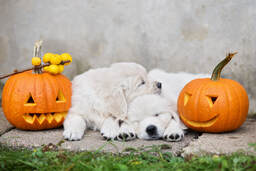 Turkey with all the fixings, cranberry sauce and pumpkin pie—we look forward to these delicious Thanksgiving dishes all year! With so many tasty treats to tempt our pets, it’s not surprising that our holiday feasts cause the majority of Thanksgiving-related pet emergencies. The most common Thanksgiving dangers usually come in one of a few flavors:
0 Comments
 Whether it’s time to buy a collar or harness for your puppy or dog for the very first time or replace one that’s wearing out, it’s important to understand that there are a variety of collars and harnesses that work for different dogs in different circumstances. Here are some of the pros and cons of dog collars vs. dog harnesses for you to consider. The Pros and Cons of Dog CollarsPros of dog collars:
Warning: Avoid so-called corrective collars, like choke collars and prong collars, which can cause neck injury, pain, and even strangulation. The Pros and Cons of Dog Harnesses Pros of dog harnesses: Considering buying a dog harness instead of a dog collar? Some of the advantages to harnesses include that they may:
Check out our step-by-step guide covering how to put on a dog harness, which walks through the process of putting on three of the main types of dog harnesses (standard, step-in, front clip). As with buying collars, you’ll need to make sure you select the right size harness for your dog. A harness fits if you can slip one finger between your dog’s skin and the harness (for small dogs) or if you can fit two fingers between your dog’s skin and the harness (for large-breed dogs). Article by AKC  Traveling by air with a pet can be a challenge. If you have a dog small enough to fit comfortably in an airline approved carrier that slides under the seat in front of you, it’s much easier. If your dog is not a service animal or small enough to travel in-cabin, you’re almost better off to drive to the destination. Placing an animal in cargo has a mountain of risks associated with it. There are actual horror stories about the trauma animals have suffered during air travel by cargo. There was a period of time where it seemed these stories where prevalent in news headlines. Most airlines have since attempted to improve their service to animals in cargo but there are still many factors they cannot control. To begin with the stress from simply being separated from you can be devastating to a dog. Add to that the air temp which will usually be extreme to one end of the thermostat or the other and the noise of it all is a definite recipe for disaster. God forbid you should hit turbulence while flying with a pet in cargo! I can’t even imagine what goes through their minds being isolated, cold (or hot) and dealing with the deafening sounds of the jet engines accompanied by the banging and rattling of other cargo items! By the time you land, you have an animal who is a nervous wreck at best. Personally I would never recommend flying with an animal who has to be taken to cargo. If you have a small dog, it can still be challenging, especially if the dog has never flown before and is an adult. But if he or she knows you are right there with them, it helps. The first thing you need to do is find out the airlines policy on traveling with pets. Each airline is different. They have restrictions on the types of pet, size of the pet and the number of pets allowed per carrier as well as carrier requirements. But all airlines have one common rule; the animal is NOT to be removed from the carrier while in flight. Now granted, while I was traveling with my 3 month old Chihuahua, I would stick him inside my jacket and hold him during the flight on the first 3 or 4 trips he took to help ease his nervousness. But this was all done on the down low; added attention was not what I needed! I avoided letting the person sitting next to me be aware of what I was doing, let alone any flight attendants! Once you know the airline rules, research the airports you will be in. Pay close attention to the airports where you will have long layovers. Many airports are pet friendly enough to provide pet relief stations. You typically need someone’s assistance to reach these areas, but if the dog needs a potty break he can get one. I actually trained my dog to use puppy pads so if a pet area was not available I could take him to the rest room and put him on a puppy pad. Or while sitting at the gate I could lay down a puppy pad under my seat to help avoid unwanted accidents. Some airports tag themselves as pet friendly and will allow you to put your dog on a leash while in the terminal. Restaurants can be another challenge, but most will allow a pet in as long as it remains in the carrier and on the floor. Others are friendlier and may even be willing to provide a bowl of water. If you travel with your pet regularly you will learn where your best pet friendly options are. If this is the first flight or first trip for your pet, do not go buy a carrier the night before and then stuff the dog in it the next day for the first time and expect to have a good trip. Buy a carrier well enough in advance that you can let the dog get used to it beforehand. Leave it in the house with the door open so he or she can explore it. Place a familiar blanket or t-shirt in it along with a toy and chew stick. Chew toys can be useful in allowing the dog a way to release nervousness. Since they will be spending multiple hours in the carrier, being comfortable and feeling secure will help the trip. One of the best things you can do is limited what your dog eats and when; especially on the first trip or if your dog is a nervous traveler. We have one Chihuahua, my husbands, who does not travel as much as my little guy does. My husband took him on his first trip and it was a horrible experience for both of them. Not quite realizing how nervous he would be, my husband allowed him to have breakfast just before leaving. Well let’s just say there was a very stinky and messy incident which thankfully took place prior to boarding. Had the incident happened while on the plane, it would NOT have been a good scene! Limit what you give your dog to eat if he or she is not experienced with air travel. If your trip will take most of the day and you want to feed him something, feed him at least 3 hours prior to leaving for the airport. The best solution is to avoid feeding him or her until you get to your destination. If nerves do become a problem he or she won’t get hungry anyway. Withholding food is easy enough, but withholding water is another story. You will want to be able to offer your dog a drink at least once during the trip. Nerves can cause them to get thirsty which if not satisfied leads to more stress. You can find collapsible bowls or measuring cups that work excellent for traveling. When not in use they collapse flat for easy storage. Allow enough water to keep him hydrated. Another good trick is to actually allow for time to stop by a park before you get to the airport. Let your dog out to run off some energy and take care of business before getting to the airport. This will at the very least give him or her the opportunity to empty the bladder! Releasing some energy is good as well since it might help him or her calm down a bit once you get to the airport. If you anticipate your pet being nervous you can also check with your veterinarian about a mild sedative to help calm the nerves. Although I personally have never had any luck with this option. Your presence, along with being attentive and reassuring them that everything is ok, can often times be enough to help with the nervousness. If you are familiar with essential oils, you may be able to provide some relaxing and calming aromatherapy during the trip also. Don’t be afraid to let people know if the pet is nervous and should be left alone. In my experience most flyers are aware of this fact and cautious about petting unfamiliar animals. Children are the biggest problem I have; not all of them have been raised to understand the boundaries of approaching unfamiliar pets. If the parent is not keeping an eye on them, they can get very excited about seeing a dog in the airport and try to pet him. If your pet is nervous, even if you do not believe they would bite someone, play it safe, politely ask people to leave him alone. The last thing you need during your trip is a stranger who has been bitten by your otherwise friendly and loving companion! Stress can have an enormous impact on their normal behavior. With consideration to these primary concerns, some patience and understanding, you can help reduce the stress both you and your pet may experience during your first air travel trip. Pet Article courtesy of http://pet-articles.blogspot.com.  With all the companionship and love that our dogs give so freely, it's hard to imagine that some owners just don't take responsibility for their dogs. But it's true. Millions of dogs—healthy dogs—are euthanized every year. Whether through owner neglect or owner ignorance, millions of healthy dogs will endure the same fate this year. So what's a responsible dog owner to do? The best thing you can do, as a dog owner, is to ensure that your dog doesn't become a statistic, and you do that through responsible pet ownership. Welcoming a new dog into your house means taking on additional long-term responsibility. Many new dog owners find something cute or romantic about bringing that puppy in the window home until they realize that there's a modicum of work involved in caring for that cute, adorable little face, and a price to pay for those wet, slobbering kisses. You wouldn't expect to return a baby. Its' no less wrong to return a dog when the novelty wears off, and it ought to be criminal to leave a dog somewhere on its own. In many ways, dogs are as vulnerable as newborn infants are, but dogs are dependent upon their owners for their entire lives. Listed below you'll find basic steps to responsible dog ownership, and many of them are just common-sense rules of the road. 1. Selecting Your Dog – Turn to a local animal shelter or rescue operation to select a puppy or dog. Remember that older dogs need loving owners too. Refuse to purchase a puppy or dog that started life in a puppy mill. 2. Test Your Dog – Contact a veterinarian and ask him to run the usual series of tests on your new companion. 3. Spay or Neuter Your Dog – Responsible pet owners always spay and neuter their dogs and cats. There are far more dogs waiting for adoption than there are owners to adopt them. 4. Provide Medical Care – Aside from the annual physical examination and vaccinations, protect your dog from heartworm, ticks and fleas. Talk with your vet about the many options available today. Contact your vet at the first sign that something is wrong with your dog. 5. Provide Adequate Food and Water – Provide food suited to your dog's age, size and condition. 6. Walk Your Dog – Your dog will let you know when it needs to be walked. 7. Provide Exercise and Recreation – Provide ample space, dog toys and opportunity for your pet to exercise. If you haven't thrown a Frisbee in twenty years, you'll be surprised at how much fun it is to try to outsmart your dog—unlikely! 8. Protect Your Dog from Abuse – Animal cruelty is serious business, and in some states, it's a felony. Even the FBI acknowledged that animal cruelty is a known marker (future indicator) of violence against humans. If anyone in your house intentionally mistreats your dog, seek help immediately. You could thwart the next school shooting. 9. Discourage Aggressive Behavior – You'll know the difference between hearty play and aggressive behavior. Contact your vet at the first sign of aggressive behavior to discuss your options. 10. Coping with Serious Illness and Geriatric Dogs –Geriatric dogs are prone to many of the same illnesses that plague geriatric humans. You'll want to do everything in your power to keep your dog comfortable at the end, but at some point, it may become necessary to end the suffering. If you've been a responsible dog owner throughout the dog's life, you'll want to end that life just as responsibly as you cared for it. Pet Article courtesy of http://pet-articles.blogspot.com  (NewsUSA) - Owning a pet has a lot of perks, but caring for one can take its toll on your wallet. According to the ASPCA, owning a dog or cat can cost up to $1,000 in the first year, and many people end up spending much more. The good news is you can cut your pet care expenses without compromising your pet's health and well-being. Here are a few ways you can save money and keep your pet healthy. 1. Don't skip the vet. If you're trying to save money, it can be tempting to cut back on veterinary visits. But according to Julie Ciarmella of the American Veterinary Medicine Association, "an investment in preventive healthcare can reduce your long-term pet healthcare costs." Why? Because regular check-ups can prevent expensive complications down the road. 2. Get by with a little help from your friends. Dog-walking, pet-sitting and kennel services can be some of the most expensive aspects of owning a pet. You can save money by taking the "you scratch my dog's back, I'll scratch your cat's chin" approach and tapping into a network of other pet owners in your area. Neighborhood dog parks are great places to meet like-minded pet lovers; or, you could try good old-fashioned advertising. 3. Choose high-quality pet products that give you more value for your money. Reaching for the cheapest product can feel like a thrifty move, but you may be surprised by the impact "cheap" products can have on your budget. For example, cheaper clay cat litter needs to be changed more often, so cat owners go through bag after bag. World's Best Cat Litter is an alternative that harnesses the concentrated power of corn for long-lasting performance. You'll use less litter, replace it less often and save money in the long run. In the end, remember that what your pet needs most is love. Keep things simple and invest in high-value products where it matters, and you'll be on your way to a pet care budget that works for you. 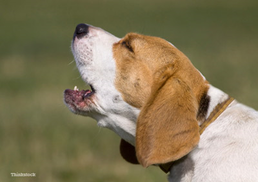 Article by: Mychelle Blake, MSW, CDBC, Lifestyle Contributor and Pet Behavior Expert Dog Behavior Living with a dog that barks constantly can be quite an irritant. Not just for the dog’s human family but potentially for neighbors, dog training classmates, and more. As a Certified Dog Behavior Consultant, I have a confession to make – I have one of those annoying barking dogs! So, what do you do when your dog engages in this behavior? The first step is to determine the “why.” Since dogs don’t have “words” like humans do, they use barking to express a variety of emotional states. Understanding what is motivating your dog to bark is very often the key to successfully resolving the problem. Let’s examine some of the common reasons behind excessive barking, and learn what you can do in each case: 1. Boredom Dogs who are understimulated mentally and physically can engage in repetitive barking to alleviate their boredom. Providing your dog with things to do during the day, as well of plenty of exercise, can go a long way toward decreasing this type of barking. Take your dog for long walks (or longer ones if you already walk your dog) and give the dog time during walks to sniff and engage in the environment so that he gets physical AND mental enrichment. When you can’t be with your dog, give him a food-stuffed or puzzle-type toy to work on so that he has a more positive activity to engage in than barking. 2. Fear and/or anxiety Dogs that are fearful, anxious or stressed can use barking as a way to express their need for the “scary” or stressful thing or situation to go away. Helping the dog learn that whatever he is afraid of is not a threat is the key to solving this type of problem. 3. Alerts Some dogs, particularly dogs of guarding-type breeds or mixes, will bark to “alert” you of the presence of something new in the environment. In this situation, you want to provide the dog with an alternate behavior. For example, if your dog barks feverishly when the delivery man comes to the door, teach your dog a really strong recall (come) cue and use that to interrupt the barking. Reward the dog for ceasing to bark and coming to you, and gradually you can extend this to a “come and lie down and stay” behavior. 4. Attention Barking can be a great way for dogs to get attention from humans. Even if you yell at your dog to be quiet, you can be unwittingly reinforcing this behavior because a dog that wants attention will take whatever he can get from you. Just as with the other examples, this can be modified using an alternate, incompatible behavior, such as asking the dog to sit, etc. Or, simply remove the reinforcement – when the dog barks at you for something, ignore him completely and wait for him to be quiet and then heavily reinforce that behavior. In the beginning you may find the dog barking even harder to get your attention (known as an extinction burst) so stay resolved and patient until the dog learns this is no longer a useful behavior (I recommend getting a good set of ear plugs!) 5. Excitement Many dogs who become overly excited and who lack impulse control can bark to express their “enthusiasm.” My dog Odie is a puppy who came from a deprived background during his critical development period and lacks a lot of impulse control. With these types of dogs, you can work on training some “self control” behaviors, such as a sit or down stay, or even any type of alternate behaviors, such as a trick. The key is that the dog is doing something else that isn’t barking. So in Odie’s case, I taught him to target my hand with his nose, shake, high five, bow and a variety of other tricks, I also taught “traditional” cues such as sit and down, and when he begins to bark excitedly at home or in a class, I immediately ask him to do one of the behaviors and reward him for it. Training impulse control behaviors such as stays and settle can also be very helpful with these types of dogs. Another important thing to remember with dogs that bark is the influence of breed. Some breeds have a tendency to bark more than others, such as terriers, shepherds and hounds. Take some time to research your specific breed, or breed mix to see what the breed(s) was originally bred for and what behavioral tendencies are common to help you understand the basis for barking behavior. Always avoid punishing your dog for this behavior – most dogs bark due to an underlying emotional issue and punishment can either increase the barking or lead the dog to expressing their needs with an equally undesirable behavior. If you find you need assistance, particularly if the dog is barking due to a serious behavior concern, contact a professional to guide you. Visit the American College of Veterinary Behaviorists, the Animal Behavior Society, and the IAABC to find a professional near you. If you have any questions or concerns, you should always visit or call your veterinarian -- they are your best resource to ensure the health and well-being of your pets.
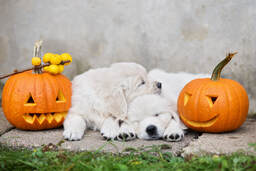 Halloween can be the spookiest night of the year, but keeping your pets safe doesn’t have to be tricky. The ASPCA recommends taking these simple, common sense precautions to keep your pet happy and healthy all the way to November 1. Stash the Treats The candy bowl is for trick-or-treaters, not Scruffy or Fluffy. Several popular Halloween treats are toxic to pets. Chocolate in all forms—especially dark or baking chocolate—can be very dangerous for cats and dogs, and sugar-free candies containing the sugar substitute xylitol can cause serious problems in pets. If you suspect your pet has ingested something toxic, please call your veterinarian or the ASPCA Poison Control Center at (888) 426-4435 immediately. Watch the Decorations and Keep Wires Out of Reach While a carved jack-o-lantern certainly is festive, pets can easily knock over a lit pumpkin and start a fire. Curious kittens are especially at risk of getting burned or singed by candle flame. Popular Halloween plants such as pumpkins and decorative corn are considered relatively nontoxic, but can produce stomach discomfort in pets who nibble on them. Be Careful with Costumes For some pets, wearing a costume may cause undue stress. The ASPCA recommends that you don’t put your dog or cat in a costume unless you know he or she loves it. If you do dress up your pet for Halloween, make sure the costume does not limit his or her movement, sight or ability to breathe, bark or meow. Check the costume carefully for small, dangling or easily chewed-off pieces that could present a choking hazard. Ill-fitting outfits can get twisted on external objects or your pet, leading to injury. Be sure to have your pet try on the costume before the big night. If he or she seems distressed or shows abnormal behavior, consider letting your pet wear his or her “birthday suit” or don a festive bandana instead. Keep Pets Calm and Easily Identifiable Halloween brings a flurry of activity with visitors arriving at the door, and too many strangers can often be scary and stressful for pets. All but the most social dogs and cats should be kept in a separate room away from the front door during peak trick-or-treating hours. While opening the door for guests, be sure that your dog or cat doesn’t dart outside. And always make sure your pet it wearing proper identification—if for any reason he or she does escape, a collar with ID tags and/or a microchip can be a lifesaver for a lost pet. Article from the ASPCA 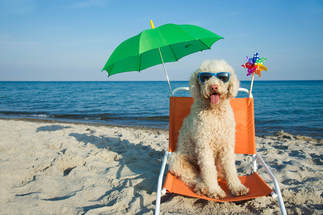 With summer quickly approaching, families are starting to plan where to head next -- and they're looking to bring along a very important guest -- the family pet. According to a recent survey from Petplan Pet Insurance, more than 78 percent of pet owners say they take their pet with them on vacation, an increase of eight percent over the previous year. If you're among the travelers adding pet-friendliness to your list of accommodation must-haves, consider staying in a vacation rental to make vacationing with your furry friend as seamless as possible. Vacation rentals offer many of the advantages of home, like fully equipped kitchens, multiple bedrooms, more space and privacy all-around. For pets used to having plenty of space, vacationing in a typical 325-square-foot hotel room might leave them feeling cramped. The average vacation rental is 1,850 square feet, giving you, your family and your pet enough space to spread out in during your stay. Vacation rentals can also help maintain some of the familiarity and routine pets crave. If your pet is used to sleeping in the living room, or their bowls are typically in the kitchen, they can still enjoy those comforts while away. Bring some of your pet's favorite toys and blankets along to help make your rental feel even more like home. In addition to more room inside, many vacation rentals offer private outdoor space. Some even have large decks and fenced-in backyards, creating ideal vacation space for travelers with pets, whether you're barbecuing outside or letting your pet get some fresh air in-between attractions. If you're worried your pet might have some trouble adjusting on vacation, a vacation rental can also give you added privacy from your neighbors. You won't have to worry about nervous barks disrupting anyone while your pet gets acquainted with their new surroundings. When you arrive, let your pet explore the rental and sniff around outdoors to help them adapt to the new space.
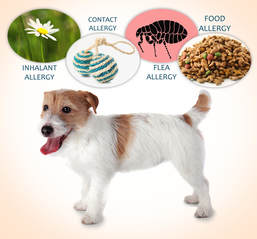 Is your dog itching and scratching? Does she have frequent ear infections or poor coat quality? You could be contributing to your dog’s distress without knowing it if she’s allergic to what you’re feeding her. Food allergies are a rising concern with dog owners and it seems like more and more dogs are suffering from them. But what exactly is a food allergy? Food allergies are different from food intolerance. Food intolerance is the result of poor digestion, such as lactose intolerance. People and dogs with lactose intolerance are either missing or have low levels of the milk digesting enzyme lactase. Food allergies are the over-response of your dog’s immune system to an invading protein. In the case of a food allergy, this protein is contained in your dog’s food. Proteins are present in most of the foods your dog eats. While most people recognize that meats are a source of proteins, there are also proteins present in grains and vegetables. Any one of these proteins has the potential to cause a food allergy. Your dog’s gastrointestinal system (mouth, stomach, intestines) protects her from potential allergens each day. Approximately 70 percent of the body’s entire immune system is centered in the gastrointestinal tract. When your dog eats a meal, the food is first digested in the stomach. The large pieces of food are broken down into smaller pieces by stomach acid and then enzymes and stomach acid work together to break the complex protein structures down into smaller structures. The partially digested food then moves into the small intestine. The food is further digested until the proteins are broken down into their smallest parts, amino acids, which can then be absorbed into the body through special cells called enterocytes. Enterocytes act as both a welcoming hostess to amino acids that they like and want, and as bouncers (door guards) for amino acids they don’t like. When a whole protein is absorbed in the intestines instead of being broken down first, the immune system reacts and your dog shows symptoms of a food allergy. When the System Works The intestinal tract’s ability to prevent the absorption of whole protein is dependant on the health and integrity of the mucosal barrier. It is the proverbial guardian of the body at the gastrointestinal gate. The mucosal barrier (lining of the gut) is comprised of both structural components and immune system components. The structural components physically prevent the absorption of large proteins. The immune system component is responsible for recognizing potentially harmful contents of the gastrointestinal tract. The health and integrity of the gastrointestinal tract is dependant on the normal structure and function of the enterocytes, effective protein digestion, and the presence of the dog’s immune cells (called IgA cells) in the gastrointestinal tract. The Gut and Immune System Together Prevent Food Allergies IgA cells are a type of immune cell secreted in the intestine. Some of the IgA will float freely in the contents of the intestine while other IgA attaches to the wall of the intestine to prevent whole protein from coming in contact with the enterocytes. Just like volleyball players they bounce whole proteins back into the contents of the intestine for more digestion. The more effective protein digestion in the stomach and intestine is, the smaller the proteins are when they come in contact with the IgA. Small proteins and single amino acids do not get bound to the IgA and are allowed to pass by the IgA and be absorbed into the body as nutrients. At a Glance Some of the breeds most prone to food allergies include: Boxer, Cocker Spaniel, Springer Spaniel, Collie, Dalmatian, German Shepherd, Lhasa Apso, Miniature Schnauzer, Retriever, Shar Pei, Soft-Coated Wheaten Terrier, Dachshund, and West Highland White Terrier Most common food allergens include: beef, dairy, and wheat. Least common food allergens are fish and rabbit. General signs and symptoms of allergies include: dry itchy skin, excessive scratching or licking, bald patches, a high frequency of hot spots, ear infections, skin infections, diarrhea, and vomiting. When the System Fails Malnutrition can affect enterocyte structure and function. A poorly functioning or damaged enterocyte can let whole proteins into the body. Once a whole protein has managed to breach all of the gut’s defenses, gut-associated lymphoid tissue (GALT) takes over. GALT can prevent the body’s natural immune response to a foreign protein. Most of the time this is what happens, but in the case of food allergies, GALT does not prevent the immune response and an allergic response (immune hypersensitivity) is formed. Unfortunately, every time the food is eaten, this over-response of the immune response becomes greater. So continuing to consume the diet that caused the allergic response results in a greater and greater response every time. After this hypersensitivity is formed, each time the dog eats the food, mast cells in the body’s immune system release hertamine. If this hertamine release is large enough, it may manifest as diarrhea, itchy skin, chronic skin infections etc. Isolating the Problem The first thing you need to do is work with your veterinarian to make sure that your dog’s symptoms truly indicate a food allergy. If that’s the case, your vet will likely recommend that you try an elimination diet— feeding a food that has a different protein (meat) source and a different carbohydrate (grain) source than what your dog has had before. Common anti-allergy foods (novel protein sources) include kangaroo and oatmeal or venison and potato. This prevents the immune response from continuing to be triggered. Your vet may also suggest that you try a hypoallergenic diet. These foods are made with hydrolyzed proteins. That means that the proteins are already broken down into pieces that are small enough that IgA won’t bind to them and they won’t trigger an immune response. Lamb and rice foods used to be considered “hypoallergenic” when most commercial dog foods were made with chicken or beef and corn or wheat. Since most dogs had never had lamb or rice before, it was a good option for dogs that experienced allergies while eating a regular food. Now, however, many dogs are showing allergies to lamb and rice diets. This is to be expected since an allergy can develop to any diet. If your dog is allergic to lamb and rice you may need to find a food with different ingredients such as fish and oatmeal, or venison and sweet potato. While your dog is on any special diet, it’s very important that she doesn’t get any other food such as cookies, treats, rawhides, people foods, etc. Since you don’t know yet exactly what she is allergic to, you don’t want to give her something other than her food and trigger the allergic reaction. Once you’ve got her on a food that she is not reacting to, you can start to reintroduce other foods. If your dog reacts, you’ll know exactly which food (or foods) causes the problem. Preventing Food Allergies Is there anything we, as owners, can do to avoid food allergies from developing? This is one of the toughest questions in dog nutrition today. While we still don’t really know how to prevent allergies entirely, there are things you can do that may help your dog fight off numerous allergies. Promote a healthy mucosal barrier. This can be done by ensuring that our dogs, and especially puppies, have adequate nutrition and health care. Watch out for gastroenteritis. There have been some theories that early gastroenteritis or severe gastroenteritis, especially in puppies or young dogs, can result in an adult dog that is more likely to develop food allergies. Preventing gastroenteritis, in theory, is easy— just don’t let your dog eat anything but dog food and treats. In actuality, this is much harder to deal with. Dogs eat a variety of things, some that are not harmful—grass, dirt, bark, wild berries (i.e., raspberries, strawberries), sometimes a little cow or horse dung—and some that are not good for them (rotten garbage or dead animals). It can be very hard to police what goes in your dog’s mouth. If you suspect that your dog has gotten into garbage or eaten something that may cause tummy upset, it may be best to feed your dog a low-protein diet (boiled white rice or potato) until the suspected tummy upset passes or you consult your vet. In general, if diarrhea lasts more than 72 hours without signs of getting better or if the diarrhea seems especially severe or malodorous, you should consult your vet. In these cases, do not attempt to treat the dog yourself with over-the-counter medications because diarrhea is the body getting rid of bad things in the gut. To give something that stops the diarrhea can result in keeping the bad things in the gut and causing a serious illness. Promote effective protein digestion. In general, your dog should have no problem digesting protein. If you are feeding a homemade cooked or raw diet, grinding or blending your protein source in a food processor can be helpful in improving protein digestion. In kibble-fed dogs, the protein is already ground before it is kibbled so there is no need to grind it. Choose a dog food with exclusive protein sources. A food that only has one or two protein sources can be helpful in giving you more choices later on should your dog develop an allergy. For example, if you use a food with five protein sources (i.e., turkey, chicken, duck, salmon, and tuna) and your dog develops an allergy to it, you now have to find a food that doesn’t contain any of these protein sources. This can be challenging. Conversely, if you feed a diet with chicken as its sole protein source and your dog develops an allergy to it, you can easily find a diet that doesn’t contain chicken. Preventing food allergies may be impossible in dogs that are prone to developing food allergies. Some breeds are becoming noted for food allergies (see sidebar p.82). As a result, it is possible that a propensity for developing food allergies may be genetic, in which case, we should avoid breeding dogs that have food allergies. Don’t Give Up Dealing with a dog with food allergies can be challenging and disheartening. Proper diagnosis of food allergies can make it easier and understanding why food allergies start can help us prevent future allergies from starting. On a personal note, my Labrador has had food allergies all his 12.5 years. It has been a long road and often a difficult one. It is so much easier to find novel protein sources now than it was 12 years ago. If you have a dog with allergies, take heart, it will get better. Article From Modern Dog |
AuthorMy passion is dogs. I volunteer for dog rescue organizations for the past 25 years. I have been owned by 4 beagles over the past 30 years. Archives
November 2022
Categories |
- Home
- Dog Coats
- Sweaters
- Dog Dresses
- Dog Shirts
-
Holiday & Formal Wear
- Formal Wear For Big Dogs
- Formal Bow Ties & Ties
- Christmas Dog Dresses, Costumes & Accessories >
- Big Dog Halloween Costumes >
- Birthday Dog Clothes
- Hanukkah Big Dog Clothes
- Easter-Spring-Summer Big Dog Clothing
- Fall and Autumn Dog Clothes
- Patriotic Dog Clothes
- Valentine Dog Clothes
- St. Patrick's Day Dresses, Shirts & Accessories
- Life_Jackets
- Sign Up For Updates
- Testimonials
- Measuring Guide
- Pet Food Recalls
- Favorite Links
- Smalll And Big Dog Boutique Blog
- Big & Small Dog Boutique FAQS
- Embroidered Creation
Awarded For.. A Unique pet Website With Care and Attention To Detail.
A Useful and Informative pet Website
Great Literature and/or Informational Quality
A Feel Of Helping the Preservation and General Well Being of All Animals.
Showing a True Love For Dogs Or Pet Types in General.
A Useful and Informative pet Website
Great Literature and/or Informational Quality
A Feel Of Helping the Preservation and General Well Being of All Animals.
Showing a True Love For Dogs Or Pet Types in General.
|
Vertical Divider
|
All tangible materials including the written word are© Copyright www.bigdog-boutique.com 2022
All logos, trademarks and copyrights are the property of the respective rights holders.
All logos, trademarks and copyrights are the property of the respective rights holders.
- Home
- Dog Coats
- Sweaters
- Dog Dresses
- Dog Shirts
-
Holiday & Formal Wear
- Formal Wear For Big Dogs
- Formal Bow Ties & Ties
- Christmas Dog Dresses, Costumes & Accessories >
- Big Dog Halloween Costumes >
- Birthday Dog Clothes
- Hanukkah Big Dog Clothes
- Easter-Spring-Summer Big Dog Clothing
- Fall and Autumn Dog Clothes
- Patriotic Dog Clothes
- Valentine Dog Clothes
- St. Patrick's Day Dresses, Shirts & Accessories
- Life_Jackets
- Sign Up For Updates
- Testimonials
- Measuring Guide
- Pet Food Recalls
- Favorite Links
- Smalll And Big Dog Boutique Blog
- Big & Small Dog Boutique FAQS
- Embroidered Creation

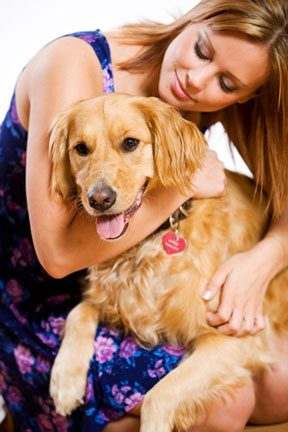
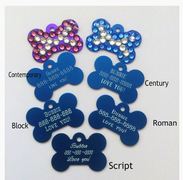
 RSS Feed
RSS Feed






